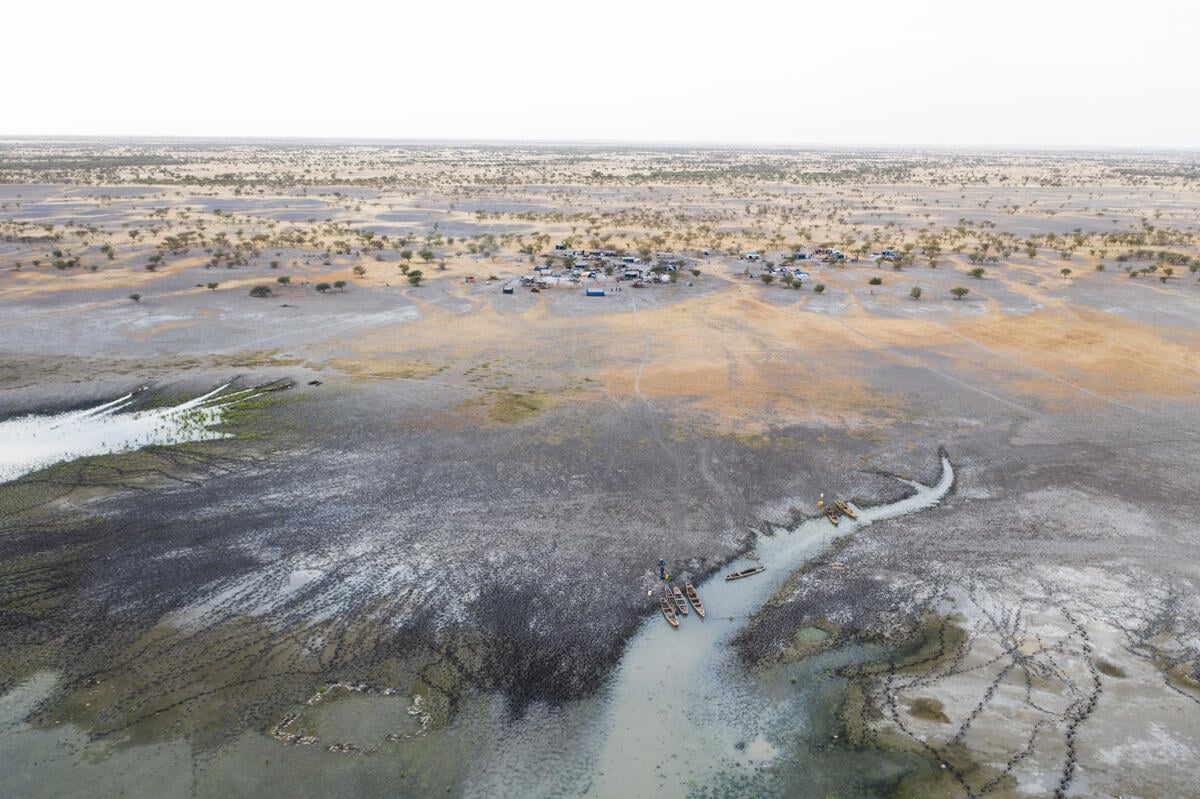As rainy season approaches, displaced Nigeriens receive emergency shelters
As rainy season approaches, displaced Nigeriens receive emergency shelters

Temperatures in Niger easily soar above 45 degrees Celsius. But when it rains, flash floods wreak havoc across the country. It is in this harsh environment of the rocky highlands of Niger’s Tillaberi region, that Aissa Modi has found safety in Ouallam town.
Forced to flee last August from N’zouett, a town near the unstable border area with Mali, the 35-year-old mother of four walked for days to reach Ouallam, the closest town that’s currently home to over 2,700 internally displaced Nigeriens and over 5,600 Malian refugees.
Now, the threat of floods looms and is likely to force more people to leave their homes, further increasing their humanitarian needs. Last year, the floods that hit Niger were fatal – according to government figures, 80 people died and over 460,000 people were affected across the country, most of them rendered homeless.
“I was a homeless woman in my own country.”
UNHCR, the UN Refugee Agency’s Associate Field Officer in Ouallam, Abdoulahi Tambari Agali explained that more people are expected to escape the imminent floods.
“We expect hundreds of families to seek refuge here in the coming months,” he said, adding that old shelters like those that displaced people like Aissa have been using need to be replaced urgently.
“Their shelters have become fragile and offer little protection from the strong winter winds and the cold,” he added.

When they first arrived in Ouallam, Aissa lived with her elderly mother and her children in a flimsy shelter, with barely any protection from the elements.
“We had nothing. We were sleeping under a roof made of branches and when it rained, we had nowhere to go,” she explained. “I was a homeless woman in my own country.”
With the approaching rainy season, UNHCR, with the support of Japan has provided emergency shelters to 7,000 people, including Aissa’s family. They received shelter kits including tarpaulins, mats, wood, ropes and construction tools to build simple yet sturdy shelters.
Niger’s Ministries of Environment and Humanitarian Action against Natural Disasters are also overseeing wider flood preparation measures in the region.
The assistance has offered displaced families some relief after they escaped incessant attacks and intimidation by armed groups in the Tillaberi and neighbouring Tahoua regions, which straddle the volatile border areas of Mali and Burkina Faso.
Increasing numbers of Nigeriens have been uprooted from their homes. By the end of 2020, some 140,000 people had fled, more than double the total of those displaced the year before.
“For the first time since I fled, I feel like a proper citizen.”
Niger’s security situation is impacted by the wider regional instability that recently pushed the number of internally displaced people in Africa’s Sahel region – which includes Burkina Faso, Mali, Chad and Niger – to above two million for the first time.
But ongoing violence means the numbers have continued to rise, with over 102,000 people displaced so far in 2021.
“We were not safe,” recalled Aissa. “Armed men came every week, often at night, on their motorcycles and stole all the valuable items we had – our cattle, our jewellery and even our clothes. I was afraid for my life.”
For now, Aissa is grateful for the shelter they have, which has made a big difference in their lives.
“For the first time since I fled, I feel like a proper citizen. I miss my land, but I feel like we are living in a village again,” she says.









